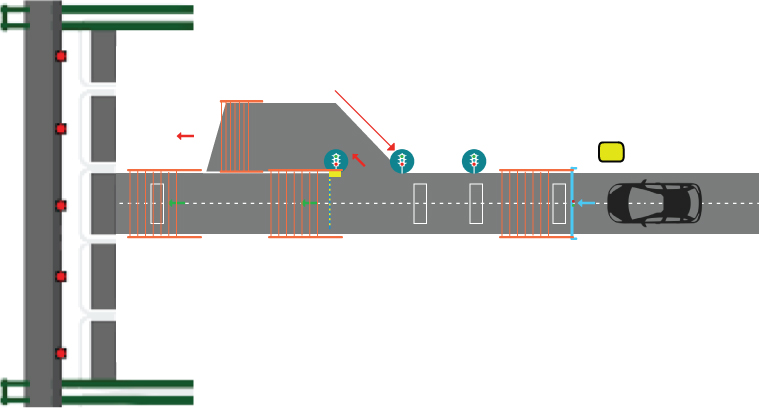Electronic Toll Collection System
NHAI’s plan for implementing ETC on India’s highway network aims to ease delays and traffic congestion at toll collection points. The ETC system would enable a smoother thoroughfare of traffic at toll plazas by facilitating Automatic Vehicle Identification (AVI) and electronic collection of toll.

Metro Infrasys ETC makes high speed tolling operations possible as drivers don’t have to stop and make the payments. ETC also reduces financial vulnerability and frauds as the automatic payments don’t require any cash handling. This system is tested through generic payment standards and includes Bar Coding, online payment, Digital payment Processing & RFID (Radio Frequency Identification) etc.
RFID belongs to a group of traffic technologies referred to as Automatic Identification and DataCapture (AIDC). AIDC methods automatically identify objects, collect data about them, and enterthis data directly into a computer system with little or no human intervention Combined ANPR and RFID technology provides the most secure and validated vehicle identification system with overall accuracy of 99.5%. Our users enjoys a safer, secure and a faster payment experience.Our two main ETC technologies are:
-
US Standard
ISO 1800-6c or 1800-6b standard, based on RFID technology. It is cost effective but lacks accuracy in comparison to European Standard
-
European Standards
Frequently adopted in European projects, the standards are based on the CEN 278 and they communicate on 5.8 GHZ frequency.
ETC General Architecture

At Entrance: at this point the vehicle presence and the Tag status are detected. This detection is used by the ETC Lane controller to direct the approaching vehicle.
First Indication Point: at this point only the vehicle presence is detected. Here an appropriate visual guidance to the user is provided on which exit (ETC or Mixed / Manual cash) will be allowed for the vehicle.
Second Indication Point: at this point again the vehicle presence is detected. Here again an appropriate visual guidance to the user is provided on which exit (ETC or Mixed / Manual cash) will be allowed for the vehicle.
The ETC exit: the vehicle exiting through this exit enters the transaction region (where the ETC transaction occurs).
The Mixed/Manual exit: the vehicle exiting through this exit is allowed to enter an adjacent lane where a different method of payment ( Smart card or cash) can be chosen or the hand held RFID reader can be used in the event of ETC lane malfunctioning. Hand held RFID reader shall be integrated with this adjacent Mixed/Manual exit lane to facilitate such transaction.
Transaction region: at this point a complete detection is done (AVC classification and Tag status). This detection provides data for the ETC transaction.
